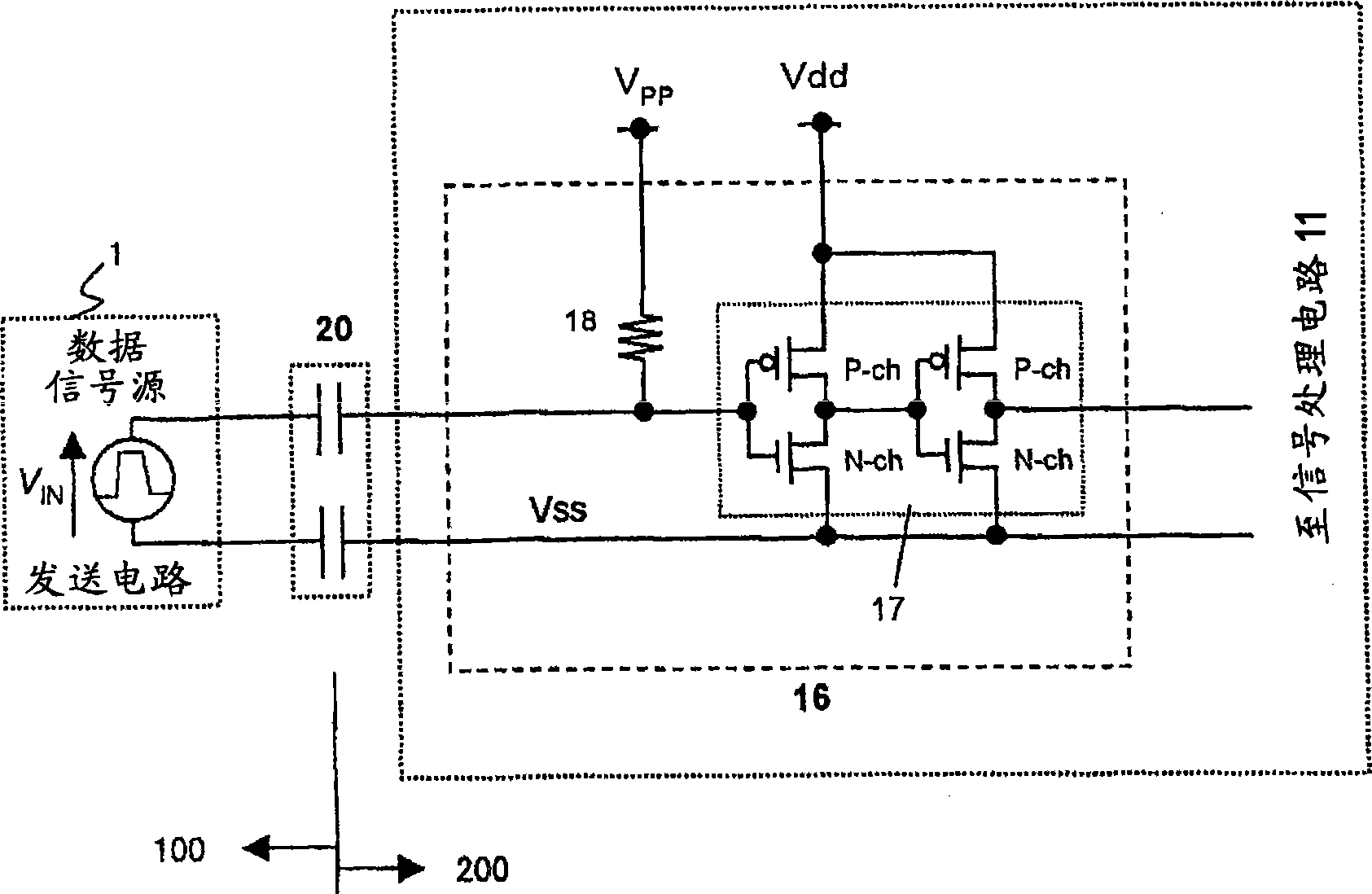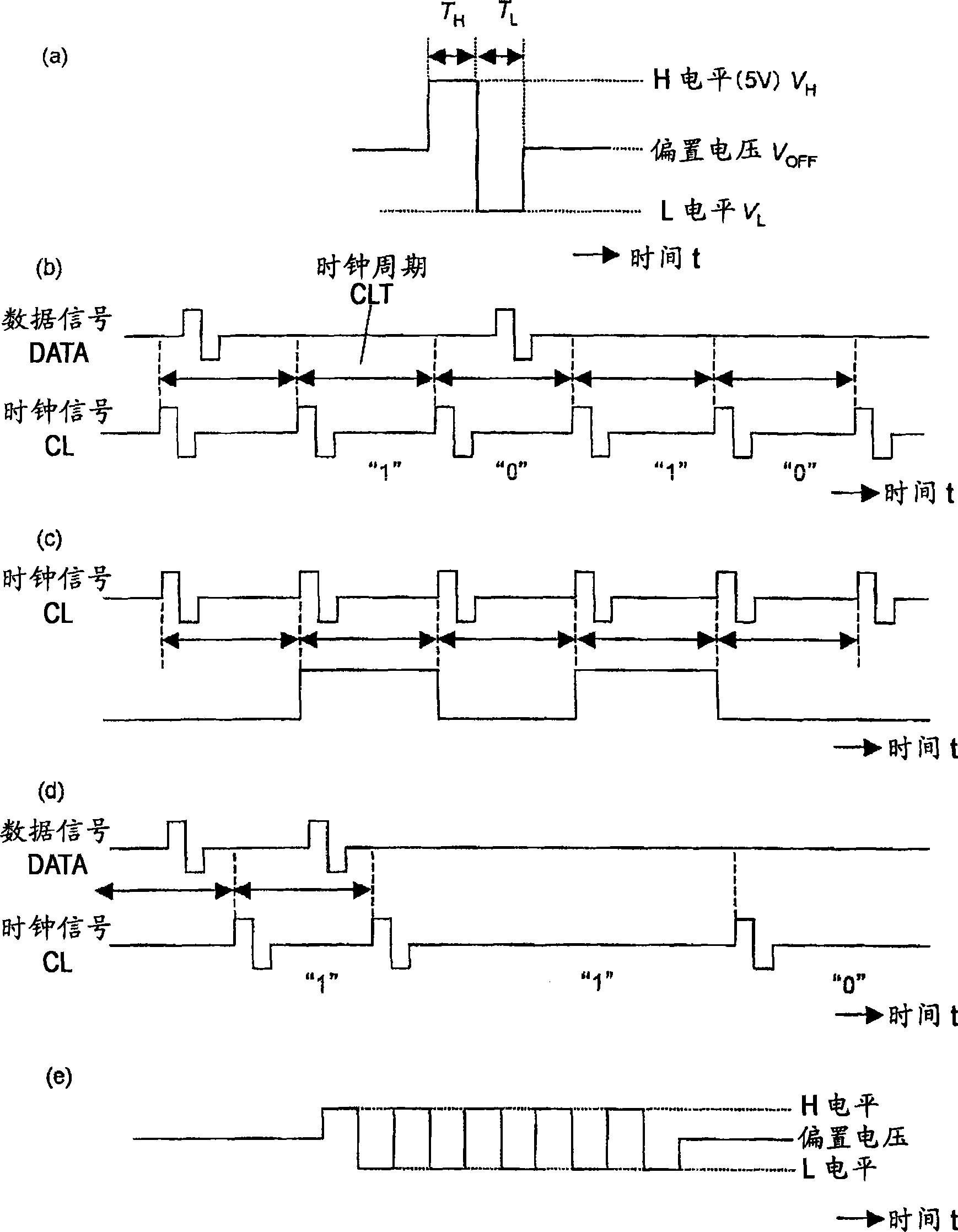Capacitive coupling-type transmitting and receiving circuits for information signal
An electrostatic coupling and signal sending and receiving technology, which is applied in the near-field transmission system using capacitive coupling, static indicators, cathode ray tube indicators, etc. consumption effect
- Summary
- Abstract
- Description
- Claims
- Application Information
AI Technical Summary
Problems solved by technology
Method used
Image
Examples
Embodiment 1
[0031] figure 1 It is a schematic configuration diagram for explaining the display device according to Embodiment 1 of the present invention. The display device is installed with the electrostatic coupling type signal transceiving circuit of the present invention. figure 1 (a) shows the display panel substrate 200, figure 1 (b) shows the transmission substrate 100 . In the display panel substrate 200 , the display portion 10 is formed or mounted on an insulating substrate 201 preferably made of glass. Here, the display unit 10 means a liquid crystal display device or the like. Furthermore, a reception signal processing circuit 11 , a plurality of reception electrostatic electrodes 14 and 15 , and an impedance conversion circuit 16 connected to each reception electrostatic electrode 14 are formed on the insulating substrate 201 . The receiving electrostatic electrode 15 is used to maintain a common potential with respect to other receiving electrostatic electrodes, and is n...
Embodiment 2
[0054] Figure 9 It is a schematic configuration diagram illustrating a display device according to Embodiment 2 of the present invention. show with figure 1 The structure of the transmission substrate that transmits display signals via the non-contact transmission path and the display panel that realizes reception is the same. right with figure 1 The same functional parts are marked with the same symbols. exist Figure 9 In , it is assumed that the transmission is performed by two sensing electrodes that assign one transmission signal to each signal (balanced transmission).
[0055] The operation of the transmission substrate 100 is substantially the same as that of the first embodiment. In the case of balanced transmission, the transmission line 2 is composed of a pair (two) transmission lines to form a signal line and its reverse signal line, and its structure is completely symmetrical with respect to the transmission direction. In addition, when the distance between ...
Embodiment 3
[0058] Figure 11 It is another configuration example and operation waveform diagram for explaining the pulse logic-level logic conversion circuit provided on the display panel substrate according to the third embodiment of the present invention. Figure 11 (a) is another example of the pulse logic-level logic conversion circuit on the display panel substrate 200 side. As mentioned above, as shown in Example 1 Figure 8 The conversion circuit of (a) has a timing limitation with respect to data input. and Figure 11 The circuit shown is capable of detecting the rising edge of the data input independently of the logic state of the clock signal CL.
[0059] The conversion circuit 16 is mainly composed of three D-flip-flops 331 , 332 , 34 . to combine Figure 11(b) shows each voltage waveform diagram to illustrate the operation of the circuit. The data signal DATA and the clock signal CL sensed on the display panel substrate 200 side are converted into binarized digital sign...
PUM
 Login to View More
Login to View More Abstract
Description
Claims
Application Information
 Login to View More
Login to View More - R&D
- Intellectual Property
- Life Sciences
- Materials
- Tech Scout
- Unparalleled Data Quality
- Higher Quality Content
- 60% Fewer Hallucinations
Browse by: Latest US Patents, China's latest patents, Technical Efficacy Thesaurus, Application Domain, Technology Topic, Popular Technical Reports.
© 2025 PatSnap. All rights reserved.Legal|Privacy policy|Modern Slavery Act Transparency Statement|Sitemap|About US| Contact US: help@patsnap.com



